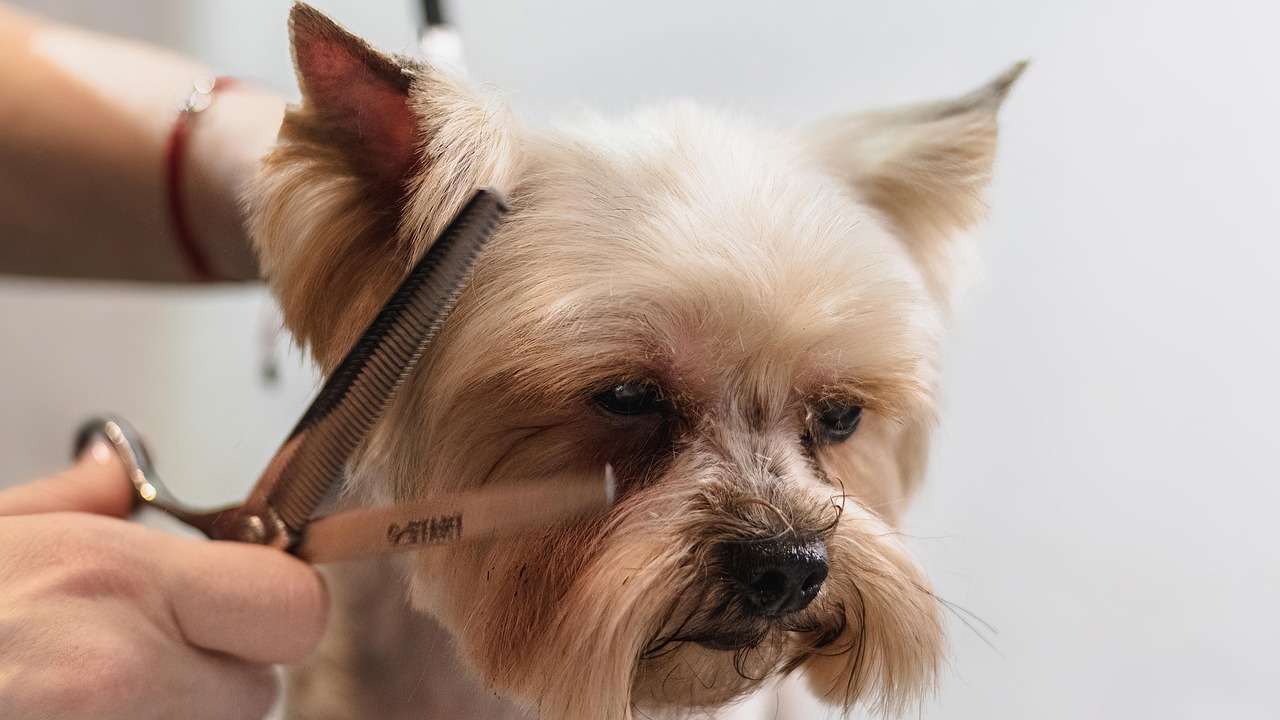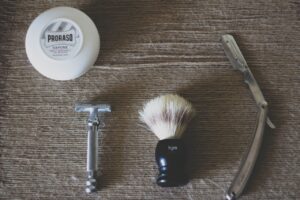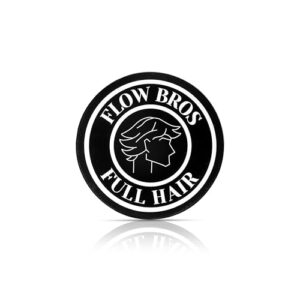Master the Fade: Smooth, Seamless, and Simple
Follow six simple, friendly steps to create a smooth, professional-looking fade at home or in the salon. Clear, practical guidance helps you plan, execute, and finish each stage with confidence, avoiding headaches and wasted time for consistently great results always.
What You'll Need
Master the Fade: Step-by-Step Tutorial
Prep and Consultation
Think a fade is just buzzing? Think again — a little planning saves time and mistakes.Discuss the exact fade type your client wants: low, mid, high, or skin. Ask how much maintenance they want and show quick pictures to confirm the look.
Examine hair growth patterns and problem areas—cowlicks, crown placement, and overall density—and note face shape to match the fade’s contour. For example, recommend a higher fade to elongate a round face.
Wash or dampen the hair for even cutting, then detangle with a comb so clippers glide smoothly.
Establish the top length and how short you’ll go at the sides and back — this plan guides guard choices and blending strategy.
Key points to check:
Set Up Your Tools and Station
A tidy station = a tidy fade. Want speed and precision? This is non-negotiable.Organize your tools within reach. Place clippers, combs, scissors and guards on your dominant-hand side—if you’re right-handed, keep the clippers to the right—so you don’t cross arms mid-cut.
Position lighting and mirrors for clear sightlines. Angle a handheld mirror behind the client to preview the back and neck, and drape a cape or towel to protect clothing.
Inspect and oil clipper blades before starting. Apply one drop of oil along the teeth, run the clippers for a couple seconds, then fit a starter guard (for example, a mid-size #2) and lay out guards in ascending order.
Secure cords or use cordless clippers for mobility. Maintain good ergonomics: stand with feet shoulder-width, keep knees soft, and ensure the client sits comfortably to prevent jerky strokes.
Create the Guide Lines
Why starting with crisp lines is like framing a painting — everything else falls into place.Define the perimeter: draw the natural hairline and decide the fade’s starting point (low, mid, high). For example, low starts just above the ear, mid sits at the temple, and high begins above the temple toward the forehead.
Set the top guide with clippers or a trimmer where the sides meet the top—use a guard to lock in an exact length. Mark the back and temple lines by clipping a thin band; tilt the head forward to locate the natural occipital bone at the back.
Keep lines even by combing hair up and checking symmetry from multiple angles with a handheld mirror. Use clipper-over-comb to tidy uneven spots. These guides ensure consistent length transitions.
Blend the Levels — The Core of a Smooth Fade
The magic trick? Controlled blending — no harsh steps, only soft transitions.Work in small zones. Start with the longest guard for the first pass to remove bulk—e.g., begin with a #4, then drop to a #2, then a #1 as you move down toward the skin.
Use a focused approach and follow these key actions:
Step back frequently and mirror-check symmetry; if one side reads heavier, return with the next longer guard and re-blend until both sides match.
Refine with Trimmers and Scissors
Want that barber-fresh polish? The small tools do the heavy lifting.Switch to trimmers to erase harsh lines and define the skin fade where required.
Use detail trimmers around the ears, sideburns, and neckline to create crisp edges—for example, trim directly behind the ear with the head tilted slightly forward to follow the curve.
Employ scissors or scissor-over-comb to texturize and remove bulk at the top-to-side junction; for thick hair, point-cut into the ends to soften the transition.
Blend any remaining lines with short, light strokes to avoid taking off too much at once and to preserve the smooth gradient.
Finishing Touches and Aftercare Advice
A flawless fade lasts longer than a week — here's how to protect your work.Tidy stray hairs with a soft brush and run your fingers through the top to reveal the fade’s shape.
Recheck symmetry in the mirror; tilt the head and correct any uneven spots with light trimmer passes.
Style the top to complement the fade: use a matte paste for textured, natural looks (work a pea-sized amount through damp hair) or a light pomade for shine and definition (apply to dry hair).
Follow these aftercare rules:
Maintain at home by edging temples and the neckline weekly with a trimmer and doing quick 5–10 minute clipper passes to keep the gradient sharp between appointments.
Go Rock That Fade
Practice these six steps to gain speed and confidence; small details—planning, blending, and finishing—turn a good cut into a great fade. Try it, tweak techniques for each client, then share your results and progress with pride and celebrate every improvement.













Love the step-by-step flow here — actually makes the fade seem possible for a noob like me.
I especially appreciated the “Create the Guide Lines” section. Took me way too long to realize my lines were uneven 😅
Quick Q: when you say “half clipper guard” between levels, do you mean literally stacking the guards or just angling the blade slightly?
Also, the aftercare tips were clutch. My scalp stopped itching after I started using the suggested lotion.
Thanks for writing it up — gonna try this weekend!
If you’re still unsure, start with a longer guard and work down. Easier to take more off than to put it back 😉
Great question, Sarah — by “half clipper guard” we mean slightly tilt the clipper to get a shorter cut without switching guards (think of it as a visual half step). Stacking guards isn’t recommended because it hides the blade’s action. Good luck this weekend!
I do the half-guard thing too — hold the clipper at about a 20-30° angle from the scalp. Gives a gradual drop without making a hard line.
Nice guide, short and sweet. Step 4 (Blend the Levels) is the nightmare part imo. A video would help so much. Also, what’s everyone’s fav trimmer for detail work? I’ve been using an old Wahl and it’s meh 😂
Totally hear you, John — blending is where most people stumble. We have a video demo planned for the next update. For trimmers, try the Andis T-Outliner or Wahl Detailer — both give crisp lines and good motor power.
Wahl Detailer here — quiet and precise. If your Wahl is old it might just be dull blades; new blades make a world of difference.
Okay this is long but I wanted to share my little learning curve:
– First time I skipped the consultation step and ended up with a too-high fade.
– After reading the “Prep and Consultation” piece, I actually asked for one more inch to be left and it changed everything.
– Also, don’t rush the blending — slow short strokes, check in natural light.
– Side note: someone mentioned scalp lotion — SPF is key if you’re going outside after fresh cuts.
Hope this helps someone else!
Aisha — thanks for sharing the experience! Consultation is underrated. And great call on SPF, especially for very short fades where the scalp gets sun exposure.
Totally agree on slow strokes. I always set a timer and take 5 extra minutes just for blending, prevents mistakes.
If anyone wants, we can add a short checklist for the consultation section — what to ask, sample pics to bring, that sort of thing. Would that be helpful?
Yup re: SPF. Burned my head during summer once, not fun. Also add a comb-over-check before finishing — helps spot unevenness.
Huge fan of the finishing touches section. Seriously, a little beard tie-in and some styling product makes the whole look cohesive.
Some detailed points:
1) Use a light pomade to smooth the top after you finish the fade.
2) If the hairline is uneven, small scissor snips are less risky than going straight in with a trimmer.
3) Aftercare: don’t shampoo for 24 hours if you had a lot of clippers near the skin — it helps the skin chill out.
Also, PSA: guard numbers vary by brand — don’t assume 1 = same length across all clippers. Learn the actual millimeters.
That 24-hour shampoo tip is gold. My scalp freaked out once when I washed too soon 🙈
Agree on the pomade — but light touch only. Too much and you lose the natural fade contrast.
Also for uneven hairlines: try dampening the hair first; you can see the real fall better and scissor corrections are cleaner.
Excellent practical tips, Olivia. We’ll add a note about guard length in millimeters — that should reduce cross-brand confusion.
Thanks everyone — these are the kind of community tips we love. We’ll fold some into the guide’s finishing touches.